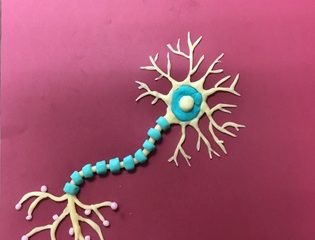NeuroSky, a Silicon Valley company, received a lot of press this week for incorporating what appears to be a mobile EEG scanner into gaming technology. One of the prototypes allows a person to don a Darth Vader suit, including a light saber that lights up when the person concentrates. NeuroSky has made a simple EEG scanner affordable (about $20), a range that could be incorporated into toys.

I have to confess, a brief perusal of Neurosky’s website left me with more questions than answers. Here’s their description of what they do:
“The neurons that comprise the brain work on electrical impulses. The last century of neurological research has shown us that brainwaves of different wavelengths indicate different emotional states, like a focused awareness, a meditative state, or drowsiness. Brainwaves have been used in medical research and therapy for years. We’re bringing it to the consumer world.”
Okay….that’s pretty simplistic so far. Let’s click on “Technology.” Here we find a description of one of NeuroSky’s software products:
“eSenseTM Algorithm Library
Our signal processing unit runs proprietary interpretation software to translate biosignals into useful logic commands.
»Neural-signal interpretation (such as emotions)
» Based upon established technology from existing databases, algorithms, and new inventions.”
Hmmmm, I’m not too sure what “established technology from … new inventions” really means.
If the game sells, then more power to NeuroSky. It does sound pretty high on the coolness scale. Where I get a bit more worried is when the “game” is reported as having potential to help people concentrate better, including children with ADHD. I’m far from certain that we have any substantive research to support such a claim.
I was also quite skeptical when a student was referred to me by our campus Disabilities Resource Center, because he had been spending a lot of money on neurofeedback, and he wanted to know if he was wasting his time and money. I did a fair amount of research at that time, and it did appear that some people were reporting good results from neurofeedback.

So….let’s enjoy the game for now. If it does work out as a treatment method, it sounds like much more fun than the traditional neurofeedback shown in this photo. In the meantime, evaluating the technology’s possibilities sounds like a great source of research projects.



1 Comment
danieceloomis · June 5, 2007 at 10:44 pm
After perusing the NeuroSky website about their new gadget, I also found the technology hard to comprehend. However, as we have learned in class it has been established that virtual reality systems can be helpful in treating neurological disorders. Participating in a virtual reality simulation activates the same parts of the brain as actually participating in that activity. As far as the game helping ADHD patients concentrate more, I would hypothesize that they would be engaged in the toy but that it wouldn’t help them with their other social and learning problems. Overall, it’s both fascinating and frightening how high-tech the next generation’s toys and games may become.
Comments are closed.